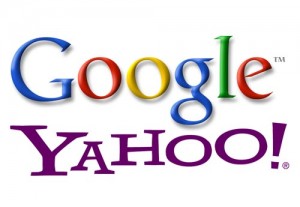- Share How Google’s Wavii & Yahoo’s Summly Acquisitions Could Hurt Marketers on Facebook
- Share How Google’s Wavii & Yahoo’s Summly Acquisitions Could Hurt Marketers on Twitter
- Share How Google’s Wavii & Yahoo’s Summly Acquisitions Could Hurt Marketers on Linkedin
- Share How Google’s Wavii & Yahoo’s Summly Acquisitions Could Hurt Marketers via email
In recent weeks, there are have been two near identical high profile acquisitions by search titans Yahoo and Google for news summarization apps. In late March, Yahoo snapped up Summly, a news summarization app for a cool $30M from a 17-year-old founder using licensed technology from SRI International. Almost exactly a month later, Google mirrored this move by acquiring Wavii, another news summarization app for $30M, reportedly out-bidding Apple in the process. Similarly, LinkedIn recently finalized the acquisition of the popular mobile news reader app Pulse for $90M.
This has left many scratching their heads as to why so much money all of the sudden has gone into simple apps. Having worked on ultra-summarization at during my Masters at MIT, news summarization is interesting technology, but it’s not at the stage of maturity that’s truly revolutionary. In fact, here’s an app similar to Summly built by a 15 year old who I have been in touch with. In fact, Google and Yahoo could have developed similar technologies themselves with their deep pockets and talent pools. Instead, they raced to buy instead of build, because they saw something worth moving on quickly.
 Rise of Mobile News Consumption
Rise of Mobile News Consumption
Content consumption, particularly news consumption, continues to dramatically shift from desktops to mobile devices with limited screen real estate. According the Pew Journalism Lab, as of October 2012, news consumption on mobile devices is the second most popular activity after email with 62% of American adults reading news on such devices weekly. The report also noted that 50% of American adults owned either a tablet or smartphone. In the past 6 months, we can only expect that these numbers have significantly increased.
News consumption on mobile devices is quite different than desktops in a number of ways:
-
Less room for exploration. On desktops, you can afford to open multiple tabs, go from site to site, and discover content on your own. In mobile devices which lack tabbing, and multiple monitors, this is extremely difficult. Content has to be intelligently discovered and presented to you by the app instead within a single window.
-
Less time (and patience) for consumption. While it’s possible to easily consume long form content on desktops and tablets, and even books on e-readers such as Kindles and Nooks, it’s frustrating to reader anything longer than single page on on a mobile device. Furthermore, most people use mobile devices in a transient time-strapped situation where they don’t have the time to consume large amounts of content. On mobile interfaces, content has to be presented succinctly in short-form.
-
Consumption centric, not manipulation centric. Mobile (and tablet) news consumption is highly effective for consumption of content, not the editing and manipulation of content. On desktop interfaces, it’s not too difficult to copy and paste a feed URL into a feed reader. On mobile and tablet devices, this is nerve wracking at the least. On mobile devices, sourcing of content has to be more like a consuming experience and less like a editing experience. At most, a mobile user can like and tap topics (not sources) they desire versus painstakingly editing and managing sources.
In the context of the new model of news consumption the race to build a compelling mobile news experience by Yahoo and Google is not surprising. After all, both of them own two of the most popular news sites online.
Marketers need to pay Attention
These days marketers are increasingly playing the role of trade publications for their respective industries through news blogs, and content curation. In the medium term, marketers may be impacted by these acquisitions and may need to start considering the implications now. Those who are slow to change, may get left behind. Here’s a few areas to watch for:
-
Content consumption destinations are moving to apps. Google, Yahoo and LinkedIn are aggressively working towards taking ownership of the content consumption experience within their own proprietary applications. We have already seen many users flock away from browser based experiences to consuming content within apps such as Flipboard. While custom microsites and blogs maintained by marketing have a role, we will likely see Google, Yahoo and LinkedIn continue to make attempts at encouraging content creators to host, publish and syndicate their content within their own ecosystems instead of outside of it.
-
Summarization is key. While Google and Yahoo continue to toy around with summarization technology, it’s important for marketers to succinctly summarize content they curate and publish for mobile audiences who do not have the time, patience or real estate to consume medium or long form content in a single sitting.
-
Think about topics and less about feeds. Traditionally the content consumer has been responsible for hand selecting which feeds, sites and newsletters they would like to follow. Apps like Wavii instead encourage users to think about the world in terms of topics which may comprise of content from multiple feeds, sites and sources. Marketers should embrace this model by moving away from solely publishing from a single source (their own blog) to curating content from many sources that all pertain to a single topic.
Lastly it’s interesting to see how this all plays into Google’s decision to kill Google Reader. While there are many contenders for alternatives, the recent acquisition of Wavii may hint at some grander plan of Google’s.







